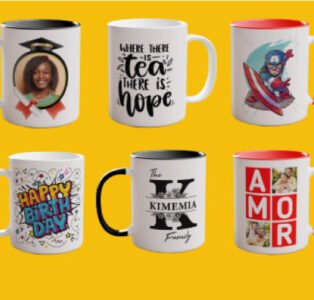Mugs – they’re a staple in our daily lives, holding our morning coffee, tea, or even a comforting hot chocolate. But have you ever paused to wonder why they’re called “mugs”? It’s a curious term that sparks curiosity and invites a deeper dive into history and linguistics. Let’s embark on a journey to uncover the fascinating story behind the name of this beloved drinking vessel.
The word “mug” has an interesting origin. It is believed to have come from the Scandinavian word “mugg,” which meant a kind of cup. The term made its way into the English language during the 17th century. But why did it stick? Well, words often evolve and adapt based on cultural exchanges and common usage, and “mug” was no exception.
Early Mugs
Mugs have been around for thousands of years, dating back to ancient civilizations. The earliest mugs were made from wood or bones. As civilizations advanced, so did the materials and designs of mugs. The introduction of pottery around 4000 BC marked a significant evolution in mug making.
Medieval to Modern Times
During the medieval period, mugs began to take on more familiar shapes and were often made from clay and metal. The invention of porcelain in China and its subsequent adoption in Europe during the Renaissance brought about a new era of beautifully crafted mugs, often decorated with intricate designs.
Mugs are more than just vessels for drinking; they hold cultural significance across the world. In many cultures, mugs are associated with hospitality and warmth. Offering a guest a mug of tea or coffee is a universal gesture of kindness and welcome.
Mugs have been depicted in various forms of art and literature throughout history. From still-life paintings to poetry, the humble mug has found its place. For instance, in many classic English novels, characters are often described sipping from their mugs, creating a sense of coziness and homeliness.
In today’s world, mugs are ubiquitous. They are found in every household, office, and café. The versatility of mugs – being able to hold hot or cold beverages, soups, and even act as impromptu storage containers – has cemented their popularity.
Coffee Mugs
These are the most common type, designed to hold coffee and often larger in size to accommodate more liquid.
Tea Mugs
Tea mugs are typically lighter and more delicate than coffee mugs, reflecting the cultural practices around tea drinking.
Travel Mugs
With the fast-paced lifestyle of the modern world, travel mugs have become essential. They are designed to be spill-proof and to keep beverages at the desired temperature for longer periods.
Mugs are often a canvas for personal expression. They come in various designs, colors, and with different slogans or images. A mug can reflect a person’s personality, interests, or even their mood. Think of the classic “World’s Best Dad” mug or one with a motivational quote.
Mugs make excellent gifts. They are practical, thoughtful, and can be personalized to suit the recipient. Whether it’s for a birthday, a holiday, or just because, giving a mug shows you care.
FAQs
The term “mug” likely originated from the Scandinavian word “mugg,” meaning a cup. Over time, it became the common term for these drinking vessels in English.
The earliest mugs were made from wood or bones, later evolving to pottery and metal.
Handles are a practical addition that allows for easier handling of hot beverages, preventing burns.
Typically, a cup is smaller and may be used for tea or coffee, often without a handle, while a mug is larger, with a handle, used for coffee, tea, and other beverages.
Yes, mugs can hold both hot and cold beverages, though their design usually optimizes them for hot drinks.










